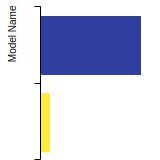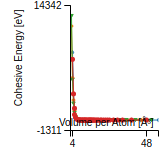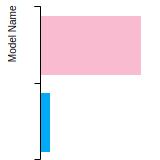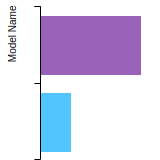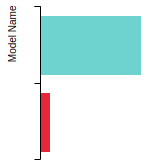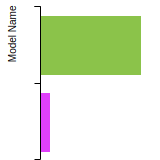 EAM_Dynamo_FortiniMendelevBuldyrev_2008_Ru__MO_114077951467_005
EAM_Dynamo_FortiniMendelevBuldyrev_2008_Ru__MO_114077951467_005
| Title
A single sentence description.
|
Finnis-Sinclair potential (LAMMPS cubic hermite tabulation) for Ru developed by Fortini et al. (2008) v005 |
|---|---|
| Description
A short description of the Model describing its key features including for example: type of model (pair potential, 3-body potential, EAM, etc.), modeled species (Ac, Ag, ..., Zr), intended purpose, origin, and so on.
|
We develop and validate an interatomic potential for ruthenium based on the embedded atom method framework with the Finnis-Sinclair representation. We confirm that the potential yields a stable hcp lattice with reasonable lattice and elastic constants and surface and stacking fault energies. |
| Species
The supported atomic species.
| Ru |
| Disclaimer
A statement of applicability provided by the contributor, informing users of the intended use of this KIM Item.
|
The potential was developed to simulate the plastic deformation in Ru. Note that the melting temperature is significantly different from the experimental value.
|
| Content Origin | http://www.ctcms.nist.gov/potentials/Ru.html |
| Contributor |
Mikhail I. Mendelev |
| Maintainer |
Mikhail I. Mendelev |
| Developer |
Fortini, Andrea Mikhail I. Mendelev Sergey V. Buldyrev David J. Srolovitz |
| Published on KIM | 2018 |
| How to Cite | Click here to download this citation in BibTeX format. |
| Citations
This panel presents information regarding the papers that have cited the interatomic potential (IP) whose page you are on. The OpenKIM machine learning based Deep Citation framework is used to determine whether the citing article actually used the IP in computations (denoted by "USED") or only provides it as a background citation (denoted by "NOT USED"). For more details on Deep Citation and how to work with this panel, click the documentation link at the top of the panel. The word cloud to the right is generated from the abstracts of IP principle source(s) (given below in "How to Cite") and the citing articles that were determined to have used the IP in order to provide users with a quick sense of the types of physical phenomena to which this IP is applied. The bar chart shows the number of articles that cited the IP per year. Each bar is divided into green (articles that USED the IP) and blue (articles that did NOT USE the IP). Users are encouraged to correct Deep Citation errors in determination by clicking the speech icon next to a citing article and providing updated information. This will be integrated into the next Deep Citation learning cycle, which occurs on a regular basis. OpenKIM acknowledges the support of the Allen Institute for AI through the Semantic Scholar project for providing citation information and full text of articles when available, which are used to train the Deep Citation ML algorithm. |
This panel provides information on past usage of this interatomic potential (IP) powered by the OpenKIM Deep Citation framework. The word cloud indicates typical applications of the potential. The bar chart shows citations per year of this IP (bars are divided into articles that used the IP (green) and those that did not (blue)). The complete list of articles that cited this IP is provided below along with the Deep Citation determination on usage. See the Deep Citation documentation for more information. 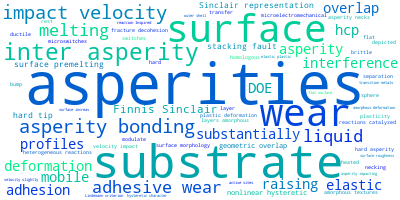
39 Citations (8 used)
Help us to determine which of the papers that cite this potential actually used it to perform calculations. If you know, click the .
USED (high confidence) J. Zhong, “Atomistic Simulation of Severely Adhesive Wear on a Rough Aluminum Substrate.” 2020. link Times cited: 0 Abstract: In this Chapter, a severely adhesive wear on a rough aluminu… read more USED (high confidence) X. Liu, X. Wen, and R. Hoffmann, “Surface Activation of Transition Metal Nanoparticles for Heterogeneous Catalysis: What We Can Learn from Molecular Dynamics,” ACS Catalysis. 2018. link Times cited: 43 Abstract: Many heterogeneous reactions catalyzed by nanoparticles occu… read more USED (high confidence) J. Zhong, R. Shakiba, and J. B. Adams, “Molecular dynamics simulation of severe adhesive wear on a rough aluminum substrate,” Journal of Physics D: Applied Physics. 2013. link Times cited: 41 Abstract: Severe adhesive wear on a rough aluminum (Al) substrate is s… read more USED (high confidence) H. Eid, G. Adams, N. McGruer, A. Fortini, S. Buldyrev, and D. Srolovitz, “A Combined Molecular Dynamics and Finite Element Analysis of Contact and Adhesion of a Rough Sphere and a Flat Surface,” Tribology Transactions. 2011. link Times cited: 27 Abstract: A combined molecular dynamics and finite element model and s… read more USED (low confidence) S. Solhjoo and A. Vakis, “Single asperity nanocontacts: Comparison between molecular dynamics simulations and continuum mechanics models,” Computational Materials Science. 2015. link Times cited: 32 USED (low confidence) P. Süle and M. Szendrő, “The classical molecular dynamics simulation of graphene on Ru(0001) using a fitted Tersoff interface potential,” Surface and Interface Analysis. 2013. link Times cited: 6 Abstract: The accurate molecular dynamics simulation of weakly bound a… read more USED (low confidence) A. Broué et al., “Thermal and topological characterization of Au, Ru and Au/Ru based MEMS contacts using nanoindenter,” 2010 IEEE 23rd International Conference on Micro Electro Mechanical Systems (MEMS). 2010. link Times cited: 13 Abstract: This paper reports the comparisons between several pairs of … read more USED (low confidence) A. B. Oliveira, A. Fortini, S. Buldyrev, and D. Srolovitz, “Dynamics of the contact between a ruthenium surface with a single nanoasperity and a flat ruthenium surface: Molecular dynamics simulations,” Physical Review B. 2010. link Times cited: 6 Abstract: We study the dynamics of the contact between a pair of surfa… read more NOT USED (low confidence) S. Mukesh and N. Lanzillo, “A Multiscale Simulation Study of the Structural Integrity of Damascene Interconnects in Advanced Technology Nodes,” IEEE Transactions on Electron Devices. 2023. link Times cited: 0 Abstract: The structural stability of tight-pitched (18 nm and below) … read more NOT USED (low confidence) M. Khajehvand, H. Seppänen, and P. Sepehrband, “Nanoscale contact behavior of (1 1 1) fcc metallic surfaces,” Computational Materials Science. 2019. link Times cited: 3 NOT USED (low confidence) N. Chen, Q. Peng, Z. Jiao, I. van Rooyen, W. Skerjanc, and F. Gao, “Analytical bond-order potential for silver, palladium, ruthenium and iodine bulk diffusion in silicon carbide,” Journal of Physics: Condensed Matter. 2019. link Times cited: 6 Abstract: The analytical bond-order potential has been developed for s… read more NOT USED (low confidence) F. Yang, R. Carpick, and D. Srolovitz, “Mechanisms of Contact, Adhesion, and Failure of Metallic Nanoasperities in the Presence of Adsorbates: Toward Conductive Contact Design.,” ACS nano. 2017. link Times cited: 17 Abstract: The properties of contacting interfaces are strongly affecte… read more NOT USED (low confidence) F. Delogu and C. Ricci, “The Mechanochemical Route to Nanoscale.” 2015. link Times cited: 0 NOT USED (low confidence) W. Paul, D. Oliver, and P. Grütter, “Indentation-formed nanocontacts: an atomic-scale perspective.,” Physical chemistry chemical physics : PCCP. 2014. link Times cited: 15 Abstract: One-to-one comparisons between indentation experiments and a… read more NOT USED (low confidence) F. Delogu, “A possible alloying mechanism in idealized collisions between Cu and Sn crystals,” Chemical Physics Letters. 2012. link Times cited: 18 NOT USED (low confidence) M. I. Bâzu and T. I. Băjenescu, “6. Case Studies,” New Roots in America’s Sacred Ground. 2011. link Times cited: 0 NOT USED (low confidence) A. Broué et al., “Characterization of gold/gold, gold/ruthenium, and ruthenium/ruthenium ohmic contacts in MEMS switches improved by a novel methodology,” Journal of Micro-nanolithography Mems and Moems. 2010. link Times cited: 12 Abstract: Comparisons between several pairs of contact materials are d… read more NOT USED (low confidence) F. Delogu, S. Garroni, and G. Mulas, “Hydrogen reactivity toward carbon monoxide under mechanochemical processing,” International Journal of Hydrogen Energy. 2010. link Times cited: 5 NOT USED (low confidence) G. Adams and N. McGruer, “A Review of Adhesion in an Ohmic Microswitch,” Journal of Adhesion Science and Technology. 2010. link Times cited: 19 Abstract: Due to fundamental scaling laws, the effect of surface force… read more NOT USED (high confidence) K. Kowalczyk-Gajewska and M. Ma’zdziarz, “Elastic properties of nanocrystalline materials of hexagonal symmetry: The core-shell model and atomistic estimates,” International Journal of Engineering Science. 2020. link Times cited: 5 NOT USED (high confidence) M. Khajehvand and P. Sepehrband, “The effect of crystallographic misorientation and interfacial separation on jump-to-contact behavior and defect generation in aluminum,” Modelling and Simulation in Materials Science and Engineering. 2018. link Times cited: 4 Abstract: The jump-to-contact (JC) phenomenon for (111)-oriented surfa… read more NOT USED (high confidence) X. Zhang, O. Adelegan, F. Y. Yamaner, and Ö. Oralkan, “A Fast-Switching (1.35- μ\texts ) Low-Control-Voltage (2.5-V) MEMS T/R Switch Monolithically Integrated With a Capacitive Micromachined Ultrasonic Transducer,” Journal of Microelectromechanical Systems. 2018. link Times cited: 8 Abstract: This paper describes the design and fabrication of an electr… read more NOT USED (high confidence) A. Basu, G. G. Adams, and N. Mcgruer, “A review of micro-contact physics, materials, and failure mechanisms in direct-contact RF MEMS switches,” Journal of Micromechanics and Microengineering. 2016. link Times cited: 43 Abstract: Direct contact, ohmic MEMS switches for RF applications have… read more NOT USED (high confidence) S. Wilson and M. Mendelev, “A unified relation for the solid-liquid interface free energy of pure FCC, BCC, and HCP metals.,” The Journal of chemical physics. 2016. link Times cited: 37 Abstract: We study correlations between the solid-liquid interface (SL… read more NOT USED (high confidence) B. Ma, Z. You, Y. Ruan, S. Chang, and G. Zhang, “Electrostatically actuated MEMS relay arrays for high-power applications,” Microsystem Technologies. 2016. link Times cited: 17 NOT USED (high confidence) B. Ma, Z. You, Y. Ruan, S. Chang, and G. Zhang, “Electrostatically actuated MEMS relay arrays for high-power applications,” Microsystem Technologies. 2015. link Times cited: 0 NOT USED (high confidence) B. Ma, Z. You, Y. Ruan, S. Chang, and G. F. Zhang, “High-power mems relay array with improved reliability and consistency,” 2015 Transducers - 2015 18th International Conference on Solid-State Sensors, Actuators and Microsystems (TRANSDUCERS). 2015. link Times cited: 2 Abstract: This paper presents a power MEMS relay array with numerous i… read more NOT USED (high confidence) P. Baláž et al., “Hallmarks of mechanochemistry: from nanoparticles to technology.,” Chemical Society reviews. 2013. link Times cited: 863 Abstract: The aim of this review article on recent developments of mec… read more NOT USED (high confidence) B. E. Gaddy, A. Kingon, and D. Irving, “Effects of alloying and local order in AuNi contacts for Ohmic radio frequency micro electro mechanical systems switches via multi-scale simulation,” Journal of Applied Physics. 2013. link Times cited: 3 Abstract: Ohmic RF-MEMS switches hold much promise for low power wirel… read more NOT USED (high confidence) M. Walker, D. Berman, C. Nordquist, and J. Krim, “Electrical Contact Resistance and Device Lifetime Measurements of Au-RuO2-Based RF MEMS Exposed to Hydrocarbons in Vacuum and Nitrogen Environments,” Tribology Letters. 2011. link Times cited: 19 NOT USED (high confidence) A. Broué et al., “Multi-Physical Characterization of Micro-Contact Materials for MEMS Switches,” 2010 Proceedings of the 56th IEEE Holm Conference on Electrical Contacts. 2010. link Times cited: 30 Abstract: NA… read more NOT USED (high confidence) C. Poulain, G. Jourdan, A. Peschot, and V. Mandrillon, “Contact Conductance Quantization in a MEMS Switch,” 2010 Proceedings of the 56th IEEE Holm Conference on Electrical Contacts. 2010. link Times cited: 7 Abstract: NA… read more NOT USED (high confidence) D. Berman, M. Walker, and J. Krim, “Contact voltage-induced softening of RF microelectromechanical system gold-on-gold contacts at cryogenic temperatures,” Journal of Applied Physics. 2010. link Times cited: 16 Abstract: A series of experiments were performed in vacuum environment… read more NOT USED (high confidence) M. Walker, C. Nordquist, D. Czaplewski, G. Patrizi, N. McGruer, and J. Krim, “Impact of in situ oxygen plasma cleaning on the resistance of Ru and Au-Ru based rf microelectromechanical system contacts in vacuum,” Journal of Applied Physics. 2010. link Times cited: 46 Abstract: Contact resistance measurements are reported for radio frequ… read more NOT USED (high confidence) A. Broué et al., “Methodology to analyze failure mechanisms of ohmic contacts on MEMS switches,” 2009 IEEE International Reliability Physics Symposium. 2009. link Times cited: 12 Abstract: This paper demonstrates the efficiency of a new methodology … read more NOT USED (high confidence) E. Pechenik, I. Kelson, and G. Makov, “Formulation of wide-ranging embedded-atom-type potentials: the role of mechanical stability,” Modelling and Simulation in Materials Science and Engineering. 2012. link Times cited: 1 Abstract: Wide-ranging inter-atomic potentials are necessary for model… read more NOT USED (definite) T. Jacobs and A. Martini, “Measuring and Understanding Contact Area at the Nanoscale: A Review,” Applied Mechanics Reviews. 2017. link Times cited: 80 Abstract: The size of the mechanical contact between nanoscale bodies … read more NOT USED (definite) B. F. Toler, R. Coutu, and J. McBride, “A review of micro-contact physics for microelectromechanical systems (MEMS) metal contact switches,” Journal of Micromechanics and Microengineering. 2013. link Times cited: 127 Abstract: Innovations in relevant micro-contact areas are highlighted,… read more |
| Funding | Not available |
| Short KIM ID
The unique KIM identifier code.
| MO_114077951467_005 |
| Extended KIM ID
The long form of the KIM ID including a human readable prefix (100 characters max), two underscores, and the Short KIM ID. Extended KIM IDs can only contain alpha-numeric characters (letters and digits) and underscores and must begin with a letter.
| EAM_Dynamo_FortiniMendelevBuldyrev_2008_Ru__MO_114077951467_005 |
| DOI |
10.25950/5839786a https://doi.org/10.25950/5839786a https://commons.datacite.org/doi.org/10.25950/5839786a |
| KIM Item Type
Specifies whether this is a Portable Model (software implementation of an interatomic model); Portable Model with parameter file (parameter file to be read in by a Model Driver); Model Driver (software implementation of an interatomic model that reads in parameters).
| Portable Model using Model Driver EAM_Dynamo__MD_120291908751_005 |
| Driver | EAM_Dynamo__MD_120291908751_005 |
| KIM API Version | 2.0 |
| Potential Type | eam |
| Programming Language(s)
The programming languages used in the code and the percentage of the code written in each one. "N/A" means "not applicable" and refers to model parameterizations which only include parameter tables and have no programming language.
| N/A |
| Previous Version | EAM_Dynamo_FortiniMendelevBuldyrev_2008_Ru__MO_114077951467_004 |
| Grade | Name | Category | Brief Description | Full Results | Aux File(s) |
|---|---|---|---|---|---|
| P | vc-species-supported-as-stated | mandatory | The model supports all species it claims to support; see full description. |
Results | Files |
| P | vc-periodicity-support | mandatory | Periodic boundary conditions are handled correctly; see full description. |
Results | Files |
| P | vc-permutation-symmetry | mandatory | Total energy and forces are unchanged when swapping atoms of the same species; see full description. |
Results | Files |
| B | vc-forces-numerical-derivative | consistency | Forces computed by the model agree with numerical derivatives of the energy; see full description. |
Results | Files |
| P | vc-dimer-continuity-c1 | informational | The energy versus separation relation of a pair of atoms is C1 continuous (i.e. the function and its first derivative are continuous); see full description. |
Results | Files |
| P | vc-objectivity | informational | Total energy is unchanged and forces transform correctly under rigid-body translation and rotation; see full description. |
Results | Files |
| P | vc-inversion-symmetry | informational | Total energy is unchanged and forces change sign when inverting a configuration through the origin; see full description. |
Results | Files |
| N/A | vc-memory-leak | informational | The model code does not have memory leaks (i.e. it releases all allocated memory at the end); see full description. |
Results | Files |
| P | vc-thread-safe | mandatory | The model returns the same energy and forces when computed in serial and when using parallel threads for a set of configurations. Note that this is not a guarantee of thread safety; see full description. |
Results | Files |
| P | vc-unit-conversion | mandatory | The model is able to correctly convert its energy and/or forces to different unit sets; see full description. |
Results | Files |
BCC Lattice Constant
This bar chart plot shows the mono-atomic body-centered cubic (bcc) lattice constant predicted by the current model (shown in the unique color) compared with the predictions for all other models in the OpenKIM Repository that support the species. The vertical bars show the average and standard deviation (one sigma) bounds for all model predictions. Graphs are generated for each species supported by the model.
Cohesive Energy Graph
This graph shows the cohesive energy versus volume-per-atom for the current mode for four mono-atomic cubic phases (body-centered cubic (bcc), face-centered cubic (fcc), simple cubic (sc), and diamond). The curve with the lowest minimum is the ground state of the crystal if stable. (The crystal structure is enforced in these calculations, so the phase may not be stable.) Graphs are generated for each species supported by the model.
Diamond Lattice Constant
This bar chart plot shows the mono-atomic face-centered diamond lattice constant predicted by the current model (shown in the unique color) compared with the predictions for all other models in the OpenKIM Repository that support the species. The vertical bars show the average and standard deviation (one sigma) bounds for all model predictions. Graphs are generated for each species supported by the model.
Dislocation Core Energies
This graph shows the dislocation core energy of a cubic crystal at zero temperature and pressure for a specific set of dislocation core cutoff radii. After obtaining the total energy of the system from conjugate gradient minimizations, non-singular, isotropic and anisotropic elasticity are applied to obtain the dislocation core energy for each of these supercells with different dipole distances. Graphs are generated for each species supported by the model.
(No matching species)FCC Elastic Constants
This bar chart plot shows the mono-atomic face-centered cubic (fcc) elastic constants predicted by the current model (shown in blue) compared with the predictions for all other models in the OpenKIM Repository that support the species. The vertical bars show the average and standard deviation (one sigma) bounds for all model predictions. Graphs are generated for each species supported by the model.
FCC Lattice Constant
This bar chart plot shows the mono-atomic face-centered cubic (fcc) lattice constant predicted by the current model (shown in red) compared with the predictions for all other models in the OpenKIM Repository that support the species. The vertical bars show the average and standard deviation (one sigma) bounds for all model predictions. Graphs are generated for each species supported by the model.
FCC Stacking Fault Energies
This bar chart plot shows the intrinsic and extrinsic stacking fault energies as well as the unstable stacking and unstable twinning energies for face-centered cubic (fcc) predicted by the current model (shown in blue) compared with the predictions for all other models in the OpenKIM Repository that support the species. The vertical bars show the average and standard deviation (one sigma) bounds for all model predictions. Graphs are generated for each species supported by the model.
(No matching species)FCC Surface Energies
This bar chart plot shows the mono-atomic face-centered cubic (fcc) relaxed surface energies predicted by the current model (shown in blue) compared with the predictions for all other models in the OpenKIM Repository that support the species. The vertical bars show the average and standard deviation (one sigma) bounds for all model predictions. Graphs are generated for each species supported by the model.
(No matching species)SC Lattice Constant
This bar chart plot shows the mono-atomic simple cubic (sc) lattice constant predicted by the current model (shown in the unique color) compared with the predictions for all other models in the OpenKIM Repository that support the species. The vertical bars show the average and standard deviation (one sigma) bounds for all model predictions. Graphs are generated for each species supported by the model.
Cubic Crystal Basic Properties Table
Species: RuDisclaimer From Model Developer
The potential was developed to simulate the plastic deformation in Ru. Note that the melting temperature is significantly different from the experimental value.
Creators:
Contributor: karls
Publication Year: 2019
DOI: https://doi.org/10.25950/64cb38c5
This Test Driver uses LAMMPS to compute the cohesive energy of a given monoatomic cubic lattice (fcc, bcc, sc, or diamond) at a variety of lattice spacings. The lattice spacings range from a_min (=a_min_frac*a_0) to a_max (=a_max_frac*a_0) where a_0, a_min_frac, and a_max_frac are read from stdin (a_0 is typically approximately equal to the equilibrium lattice constant). The precise scaling and number of lattice spacings sampled between a_min and a_0 (a_0 and a_max) is specified by two additional parameters passed from stdin: N_lower and samplespacing_lower (N_upper and samplespacing_upper). Please see README.txt for further details.
| Test | Test Results | Link to Test Results page | Benchmark time
Usertime multiplied by the Whetstone Benchmark. This number can be used (approximately) to compare the performance of different models independently of the architecture on which the test was run.
Measured in Millions of Whetstone Instructions (MWI) |
|---|---|---|---|
| Cohesive energy versus lattice constant curve for bcc Ru v004 | view | 7639 | |
| Cohesive energy versus lattice constant curve for diamond Ru v004 | view | 7012 | |
| Cohesive energy versus lattice constant curve for fcc Ru v004 | view | 7951 | |
| Cohesive energy versus lattice constant curve for sc Ru v004 | view | 8172 |
Creators: Junhao Li and Ellad Tadmor
Contributor: tadmor
Publication Year: 2019
DOI: https://doi.org/10.25950/5853fb8f
Computes the cubic elastic constants for some common crystal types (fcc, bcc, sc, diamond) by calculating the hessian of the energy density with respect to strain. An estimate of the error associated with the numerical differentiation performed is reported.
| Test | Test Results | Link to Test Results page | Benchmark time
Usertime multiplied by the Whetstone Benchmark. This number can be used (approximately) to compare the performance of different models independently of the architecture on which the test was run.
Measured in Millions of Whetstone Instructions (MWI) |
|---|---|---|---|
| Elastic constants for bcc Ru at zero temperature v006 | view | 2047 | |
| Elastic constants for diamond Ru at zero temperature v001 | view | 13915 | |
| Elastic constants for fcc Ru at zero temperature v006 | view | 1951 | |
| Elastic constants for sc Ru at zero temperature v006 | view | 1919 |
Creators: Junhao Li
Contributor: jl2922
Publication Year: 2019
DOI: https://doi.org/10.25950/d794c746
Computes the elastic constants for hcp crystals by calculating the hessian of the energy density with respect to strain. An estimate of the error associated with the numerical differentiation performed is reported.
| Test | Test Results | Link to Test Results page | Benchmark time
Usertime multiplied by the Whetstone Benchmark. This number can be used (approximately) to compare the performance of different models independently of the architecture on which the test was run.
Measured in Millions of Whetstone Instructions (MWI) |
|---|---|---|---|
| Elastic constants for hcp Ru at zero temperature v004 | view | 1783 |
Creators:
Contributor: ilia
Publication Year: 2025
DOI: https://doi.org/10.25950/866c7cfa
Computes the equilibrium crystal structure and energy for an arbitrary crystal at zero temperature and applied stress by performing symmetry-constrained relaxation. The crystal structure is specified using the AFLOW prototype designation. Multiple sets of free parameters corresponding to the crystal prototype may be specified as initial guesses for structure optimization. No guarantee is made regarding the stability of computed equilibria, nor that any are the ground state.
| Test | Test Results | Link to Test Results page | Benchmark time
Usertime multiplied by the Whetstone Benchmark. This number can be used (approximately) to compare the performance of different models independently of the architecture on which the test was run.
Measured in Millions of Whetstone Instructions (MWI) |
|---|---|---|---|
| Equilibrium crystal structure and energy for Ru in AFLOW crystal prototype A_cF4_225_a v003 | view | 142178 | |
| Equilibrium crystal structure and energy for Ru in AFLOW crystal prototype A_hP2_194_c v003 | view | 171350 |
Creators: Daniel S. Karls and Junhao Li
Contributor: karls
Publication Year: 2019
DOI: https://doi.org/10.25950/2765e3bf
Equilibrium lattice constant and cohesive energy of a cubic lattice at zero temperature and pressure.
| Test | Test Results | Link to Test Results page | Benchmark time
Usertime multiplied by the Whetstone Benchmark. This number can be used (approximately) to compare the performance of different models independently of the architecture on which the test was run.
Measured in Millions of Whetstone Instructions (MWI) |
|---|---|---|---|
| Equilibrium zero-temperature lattice constant for bcc Ru v007 | view | 2623 | |
| Equilibrium zero-temperature lattice constant for diamond Ru v007 | view | 3647 | |
| Equilibrium zero-temperature lattice constant for fcc Ru v007 | view | 2527 | |
| Equilibrium zero-temperature lattice constant for sc Ru v007 | view | 2559 |
Creators: Daniel S. Karls and Junhao Li
Contributor: karls
Publication Year: 2019
DOI: https://doi.org/10.25950/c339ca32
Calculates lattice constant of hexagonal bulk structures at zero temperature and pressure by using simplex minimization to minimize the potential energy.
| Test | Test Results | Link to Test Results page | Benchmark time
Usertime multiplied by the Whetstone Benchmark. This number can be used (approximately) to compare the performance of different models independently of the architecture on which the test was run.
Measured in Millions of Whetstone Instructions (MWI) |
|---|---|---|---|
| Equilibrium lattice constants for hcp Ru v005 | view | 22604 |
Creators:
Contributor: efuem
Publication Year: 2023
DOI: https://doi.org/10.25950/fca89cea
Computes the monovacancy formation energy and relaxation volume for cubic and hcp monoatomic crystals.
| Test | Test Results | Link to Test Results page | Benchmark time
Usertime multiplied by the Whetstone Benchmark. This number can be used (approximately) to compare the performance of different models independently of the architecture on which the test was run.
Measured in Millions of Whetstone Instructions (MWI) |
|---|---|---|---|
| Monovacancy formation energy and relaxation volume for hcp Ru | view | 443637 |
Creators:
Contributor: efuem
Publication Year: 2023
DOI: https://doi.org/10.25950/c27ba3cd
Computes the monovacancy formation and migration energies for cubic and hcp monoatomic crystals.
| Test | Test Results | Link to Test Results page | Benchmark time
Usertime multiplied by the Whetstone Benchmark. This number can be used (approximately) to compare the performance of different models independently of the architecture on which the test was run.
Measured in Millions of Whetstone Instructions (MWI) |
|---|---|---|---|
| Vacancy formation and migration energy for hcp Ru | view | 4328665 |
| Test | Error Categories | Link to Error page |
|---|---|---|
| Elastic constants for diamond Ru at zero temperature v000 | other | view |
No Driver
| Verification Check | Error Categories | Link to Error page |
|---|---|---|
| DimerContinuityC1__VC_303890932454_005 | other | view |
| EAM_Dynamo_FortiniMendelevBuldyrev_2008_Ru__MO_114077951467_005.txz | Tar+XZ | Linux and OS X archive |
| EAM_Dynamo_FortiniMendelevBuldyrev_2008_Ru__MO_114077951467_005.zip | Zip | Windows archive |
This Model requires a Model Driver. Archives for the Model Driver EAM_Dynamo__MD_120291908751_005 appear below.
| EAM_Dynamo__MD_120291908751_005.txz | Tar+XZ | Linux and OS X archive |
| EAM_Dynamo__MD_120291908751_005.zip | Zip | Windows archive |
